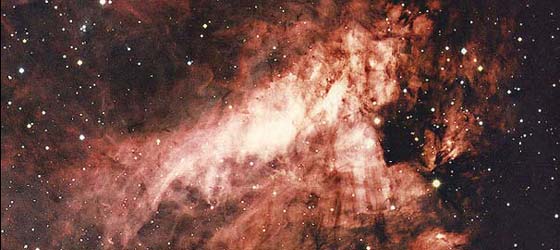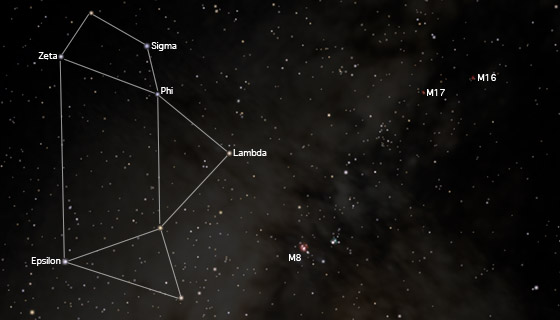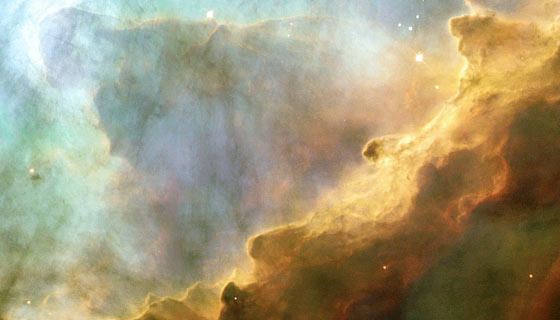
M17Basic information about M17. Also known as NGC 6618, it is a diffuse nebula (also known as an emission nebula) in Sagittarius. Other names include the Omega, Swan, Horseshoe, or Lobster Nebula. Position is right ascension 18h 20m 45.0sm, declination -16° 10m 00s. The apparent magnitude is 6, distance is estimated at between 5000 and 6000 light years and apparent size is 11 arc minutes giving a true diameter of about 15 light years. The nebula contains a small cluster of about 35 bright stars but they are obscured by gas and dust. The pink colour of the gas results from hydrogen being heated by the hot, embedded stars. This process is typical of emission nebulae. M17 was discovered by Philippe Loys de Chéseaux in 1745-46 but it gained little attention until it was "re-discovered" by Messier in 1764 when he added it to his catalog (as number 17 obviously). The brightness of this object is just on the limit of naked eve visibility but it is easy with any form of optical aid, including binoculars. 
I usually locate M17 by finding Sagittarius. That is the prominent teapot shaped constellation near the even more prominent Scorpius and in the middle of the densest part of the Milky Way. This constellation is about 15° south of the equator so it is best in the Southern Hemisphere but still good in the Northern. Locate the obvious cluster/nebula M8 and just follow the trail of stars, clusters and nebulae along the Milky Way, you will eventually reach M17 but will see many other good objects on the way! Continue a little bit further to find M16 as well. 
Above is an example of one of the awesome images of M17 taken with the Hubble Space Telescope. In fact this is only a small part of the total area of M17. The dark areas and compacted gas where star formation will occur can be clearly seen. |
![[Up]](../XuShared/Up2B.jpeg)
Comment on this page: Very Useful • Quite Useful • Useless or: View Results |
||||||||||||